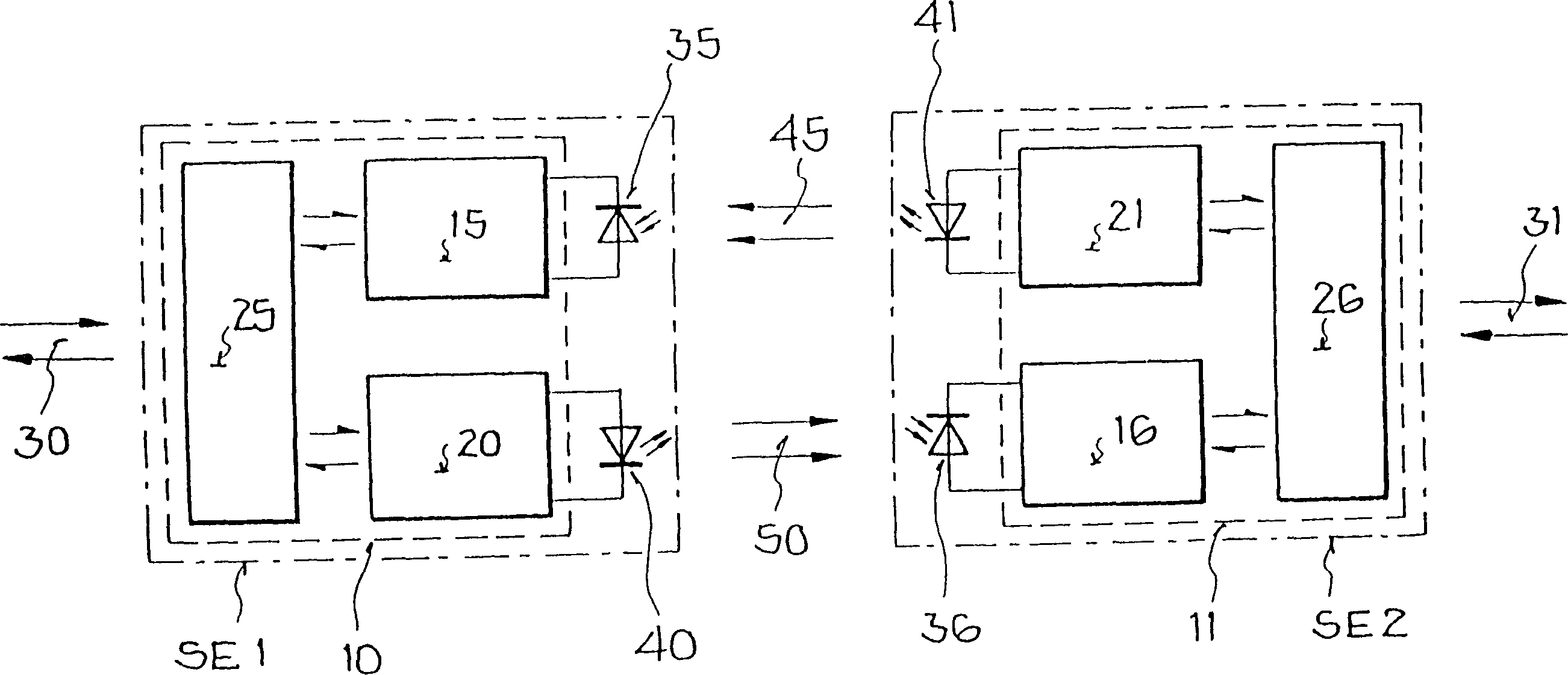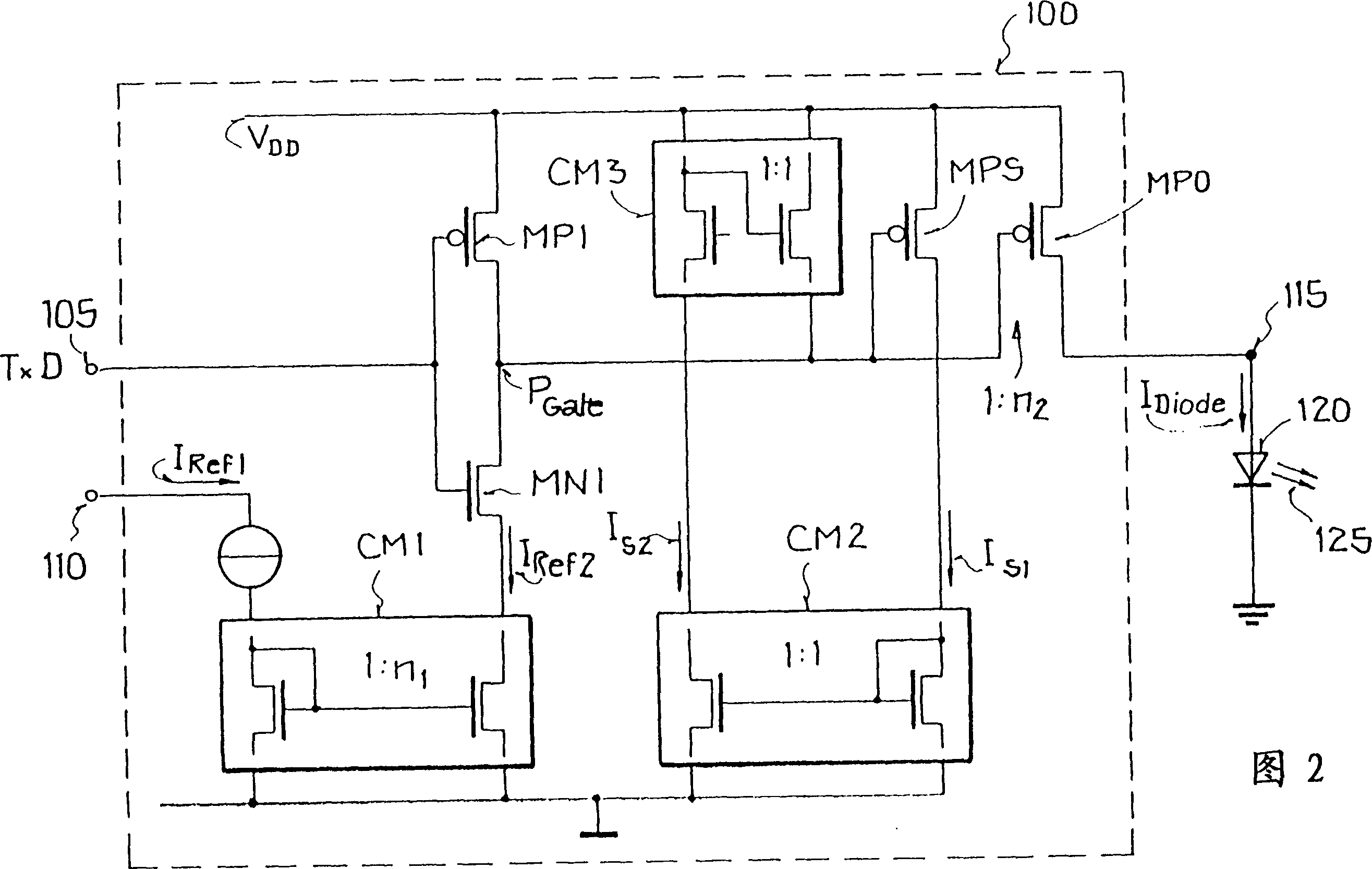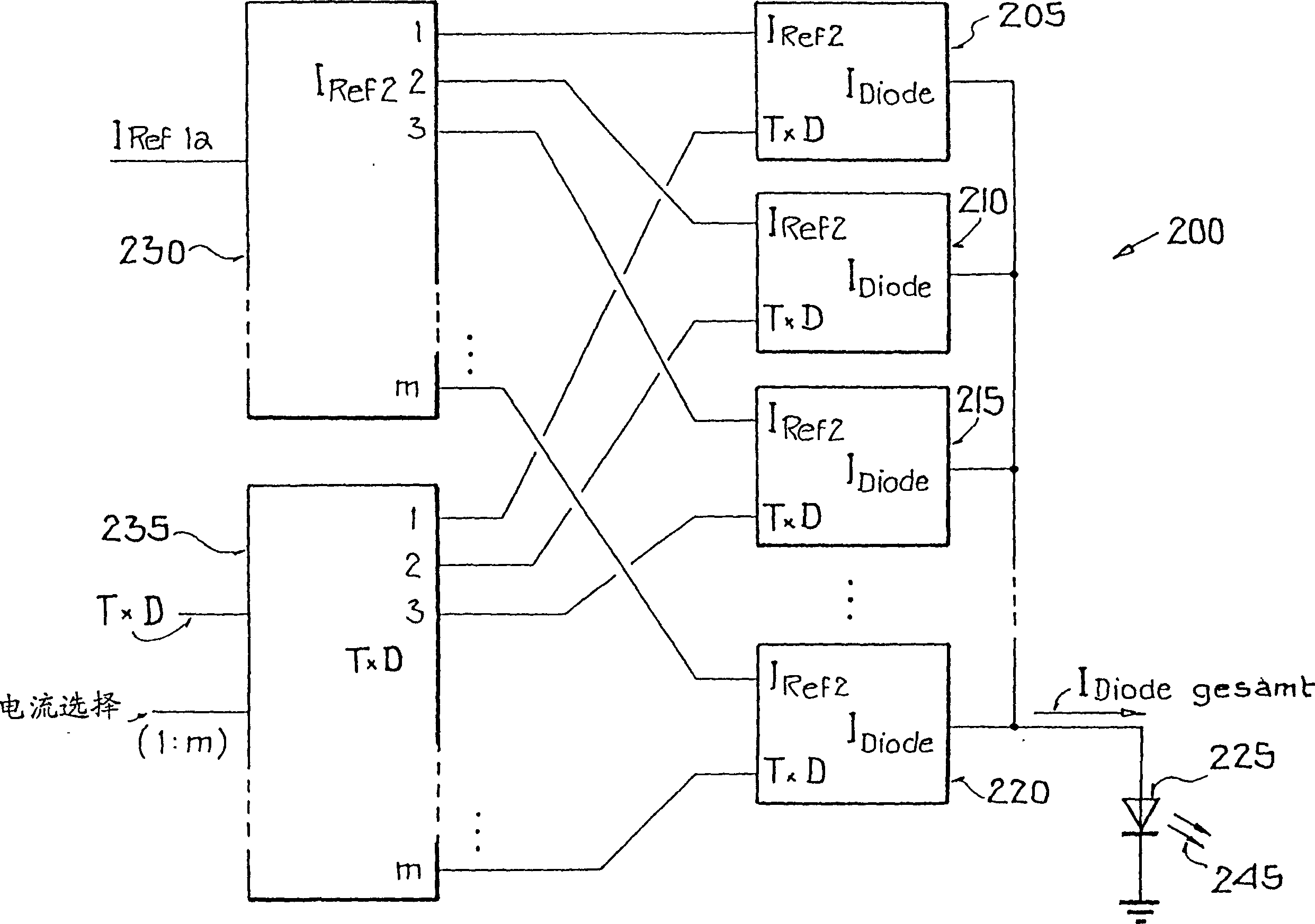Circuit for adjusting the drive power of emitting diodes
A technology of transmitting diodes and driving circuits, applied in the directions of repeaters/relay circuits, electrical components, electromagnetic wave transmission systems, etc., can solve the problems of increasing data volume and energy consumption, and achieve the reduction and reduction of data transmission energy. Transmission performance, effect of fast adjustment of drive current
- Summary
- Abstract
- Description
- Claims
- Application Information
AI Technical Summary
Problems solved by technology
Method used
Image
Examples
example 1
[0032] The first reference current I input to the second input terminal 110 of the driving circuit 100 Ref1 For example 12.5μA, this reference current will be amplified by the current mirror CM1 n 1 times, as illustrated in Figure 2 with the ratio "1:n 1 "Represented. When the input signal TxD of the first input terminal 105 of the input driver circuit 100 was in a low state (ie TxD=0), the NMOS transistor MN1 was turned off and the PMOS transistor MP1 was turned on. Therefore in this state The switching node PGate remains at the voltage V DD superior. If the input signal TxD for the transmit pulse transitions to a high state (TxD=1), the PMOS transistor MP1 is turned off and the NMOS transistor MN1 is turned on, wherein the reference current I amplified by the current mirror CM1 Ref2 Discharge the node PGate. This discharge causes the voltage of the switching node PGate to drop until the transistors MPO and MPS are turned on. Through the switching of the transistors MPS ...
PUM
 Login to View More
Login to View More Abstract
Description
Claims
Application Information
 Login to View More
Login to View More - R&D
- Intellectual Property
- Life Sciences
- Materials
- Tech Scout
- Unparalleled Data Quality
- Higher Quality Content
- 60% Fewer Hallucinations
Browse by: Latest US Patents, China's latest patents, Technical Efficacy Thesaurus, Application Domain, Technology Topic, Popular Technical Reports.
© 2025 PatSnap. All rights reserved.Legal|Privacy policy|Modern Slavery Act Transparency Statement|Sitemap|About US| Contact US: help@patsnap.com



